Chen Hongbo PhD ’25
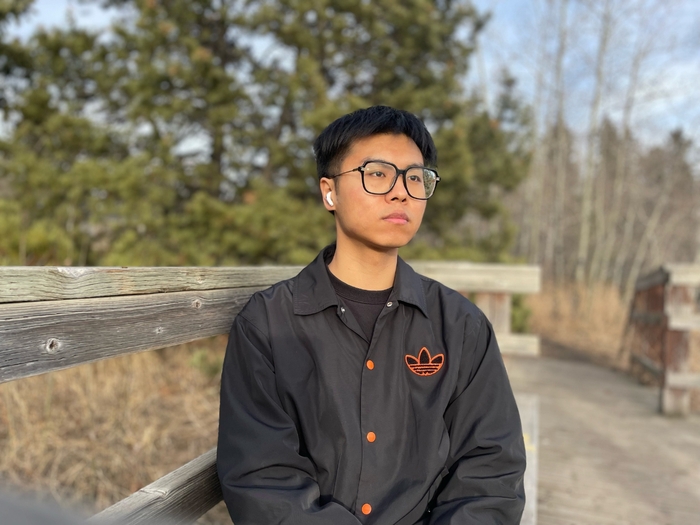
Electronic Science and Technology, School of Information Science and Technology; Joint PhD Program with the University of Chinese Academy of Sciences (UCAS)
Advisor: Assistant Professor Zheng Rui
Post-graduation destination: postdoctoral offers from Harvard Medical School (Boston Children’s Hospital) and University of Alberta
Honors and awards:
-Graduate Excellence Award of UCAS (2025)
-Best Paper 2024 Award at MICCAI International Conference on Medical Imaging (2024)
-Excellent Student Award of ShanghaiTech (2022, 2024)
-Cover Article in the IEEE Transactions on Ultrasonics, Ferroelectrics, and Frequency Control (IEEE-TUFFC) (2021)
-ShanghaiTech International Visiting Scholarship for PhD Students (2020)
Academic achievements:
-Seven SCI journal papers published, including three first-author and one co-first-author, with one under review as co-corresponding author, in top-tier journals including Medical Image Analysis (MedIA), IEEE Transactions on Medical Imaging (IEEE-TMI), and IEEE-TUFFC.
-Eight conference papers published, including four first-author and one co-first-author, in conferences including MICCAI.
-Four Chinese invention patents filed with two granted.
Personal statement
From theory to clinic: Translating research into impact
“The value of research lies not only in publishing papers but in solving real-world problems.” This is what I’ve learned most during my PhD, echoing the research philosophy instilled by my advisor, Prof. Zheng Rui.
My research focuses on 3D ultrasound imaging, a field with vast clinical potential yet significant challenges. Traditional ultrasound is limited to 2D imaging, whereas 3D ultrasound provides richer anatomical details but faces high computational complexity and slow imaging speeds, hindering clinical adoption. Under Prof. Zheng’s guidance, we developed a fast reconstruction algorithm that has significantly improved 3D ultrasound imaging efficiency. This work was published as a cover article in the IEEE-TUFFC journal and secured a patent.
I take particular pride in seeing this technology translated into clinical practice. Our team’s portable 3D ultrasound imaging system, patented nationally, has been tested in collaboration with a top-tier hospital in Beijing for minimally invasive spinal surgery applications.
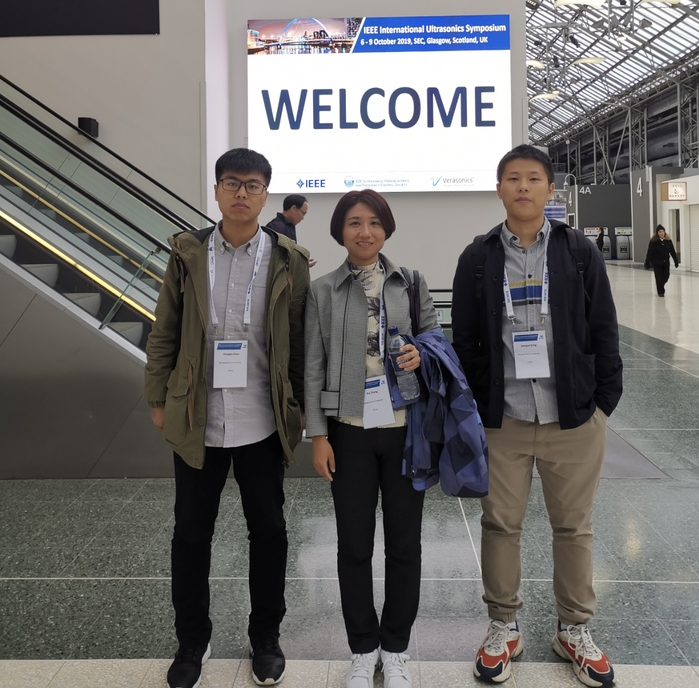
Led by Prof. Zheng Rui (middle), I attended the 2019 IEEE International Ultrasonics Symposium in UK.
Building on clinical feedback, I worked with my team to propose novel distance function fields to enhance the precision of multi-view 3D ultrasound imaging. This innovation enables surgeons to locate targets faster and more accurately, reducing radiation exposure for both doctors and patients. The work was accepted by MICCAI 2024, where I delivered an oral presentation and received the conference’s sole Best Paper Award. Reflecting on these achievements, I deeply appreciate the systematic research training I experienced at ShanghaiTech, which deepened my expertise, sharpened my research skills, and fostered comprehensive growth. Through rigorous coursework, seminars, and mentorship, I built a robust knowledge foundation and a disciplined research mindset, laying a solid groundwork for my academic journey.
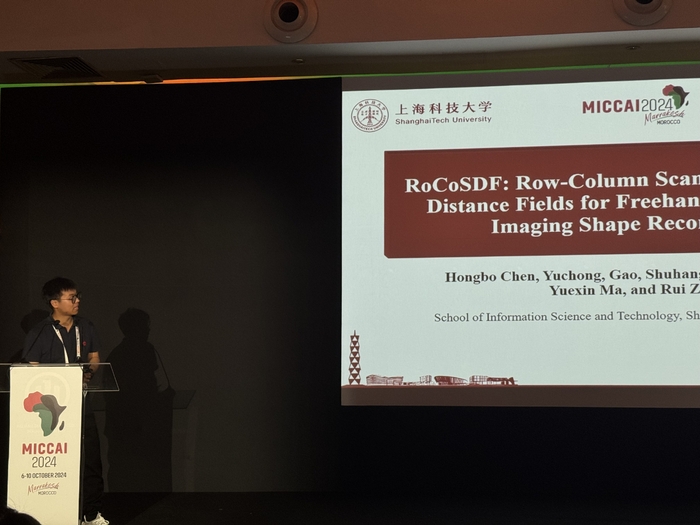
I delivered an oral presentation in MICCAI 2024.
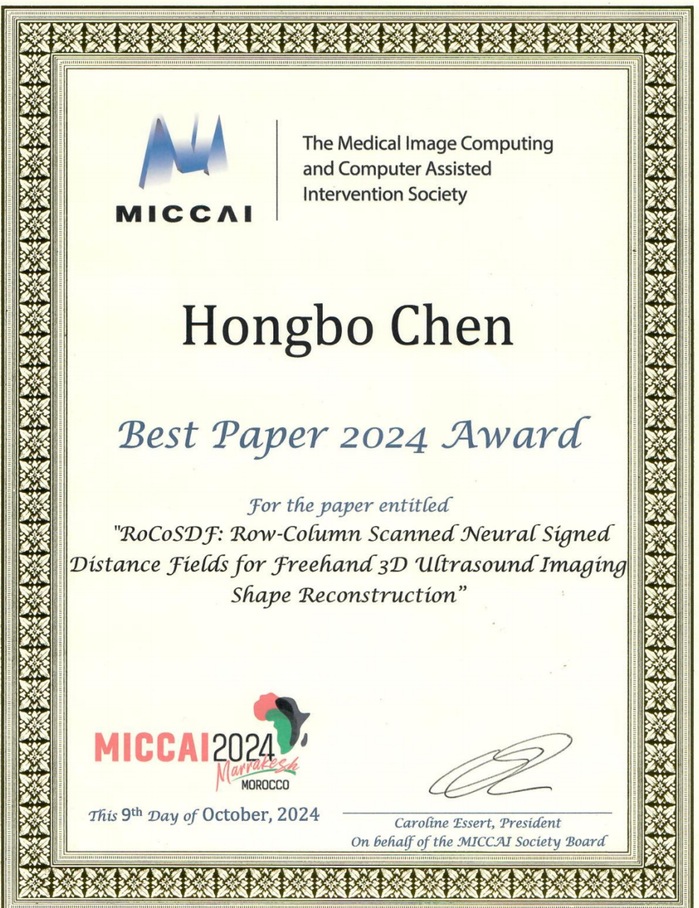
The Best Paper Award I received in the conference.
International exchange is another pathway to explore research
In 2022, supported by ShanghaiTech’s funding, I embarked on a 14-month academic exchange program at the University of Alberta, Canada. The lab emphasizes students’ independent exploration, and the university is open to interdisciplinary collaboration, providing boundless opportunities in academics. I contributed to a handheld oral ultrasound imaging project aimed at developing a radiation-free alternative to CT. Given the complexity of oral structures and ultrasound signal interference, my team optimized multiple algorithms to build a viable system. This experience taught me to design experiments independently and reinforced the belief that research is about solving practical problems, not just publishing papers.
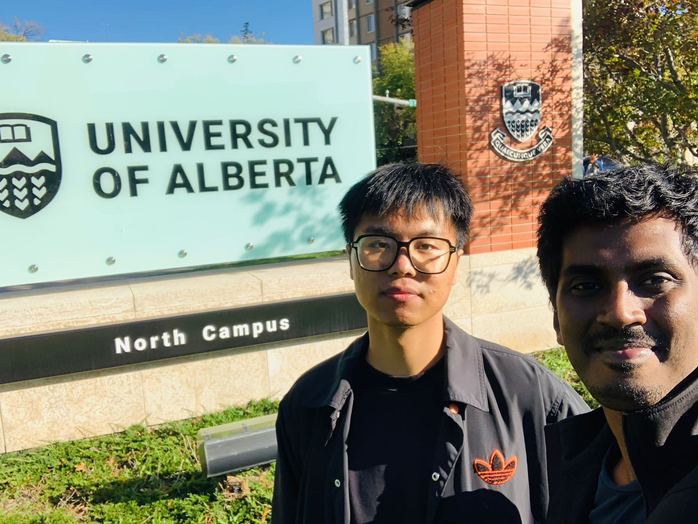
I took a photo with my teammate at University of Alberta.
Beyond the lab, I explored nature through photography, capturing Edmonton’s snowscapes and Banff National Park’s mountains and forests. Immersing myself in nature sparked research inspiration during moments of relaxation.

Edmonton’s snow view.

Landscape of Banff National Park.
Outside the lab, I observe the world through my lens, documenting the pulse of campus life. I won first place in the humanities category of ShanghaiTech’s photography competition and volunteered as a photographer for campus open days and summer camps. I find parallels between photography and research: both require patience for the perfect moment—whether awaiting ideal data in experiments or the right light for a shot. This hobby has sharpened my observation and sensitivity to image details, subtly enhancing my ability to research medical imaging.
I also served as a teaching assistant for multiple courses, supporting instructors in tutoring undergraduates and graduates. Engaging with students deepened my theoretical understanding, as their questions often sparked new perspectives. Teaching became a process of knowledge transfer and a chance to refine my academic framework.
Growth may have no single formula. Reflecting on my PhD journey, I’ve learned that growth takes many forms—tackling challenges in the lab to turn papers into products, embracing different research cultures abroad, or capturing the world through a camera.
ShanghaiTech offered me the freedom to explore, and my task was to find my path and pursue it with gratitude. Looking ahead, I aim to advance 3D reconstruction algorithms for broader clinical applications, ensuring innovative solutions benefit more patients.

